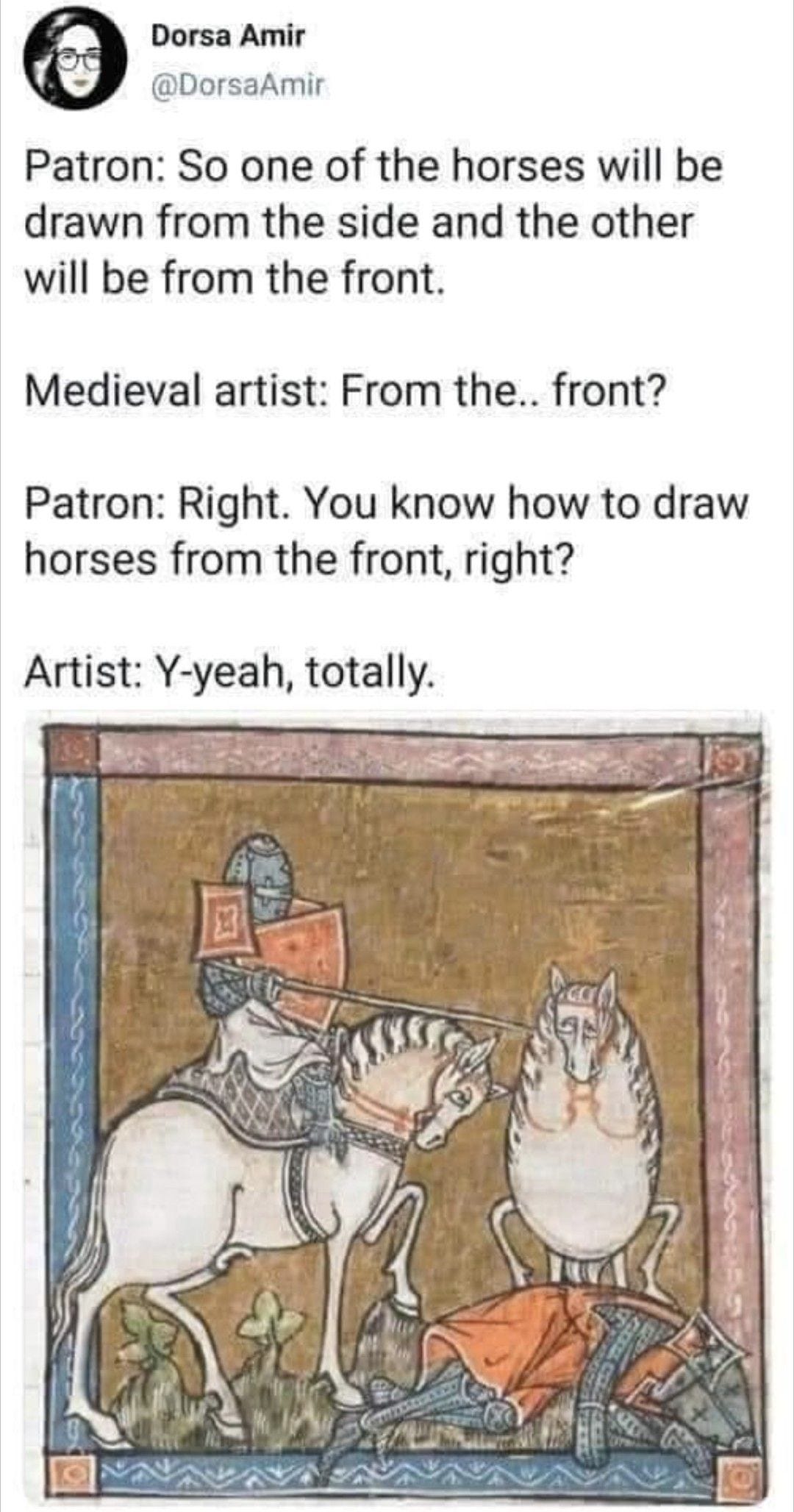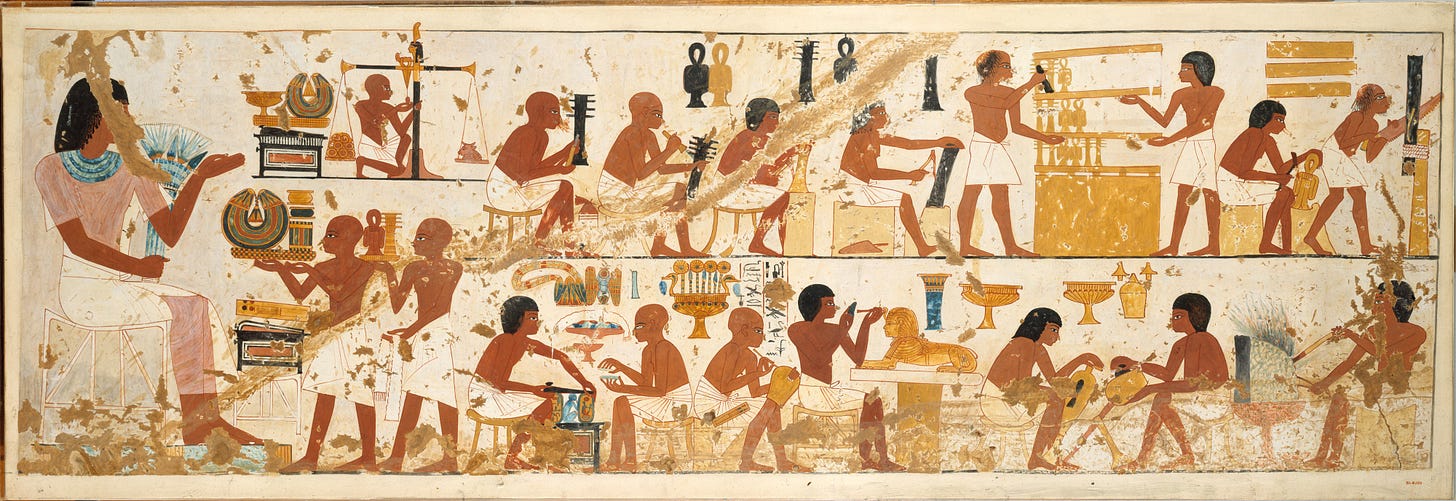Is this a good book?
Dear Reader,
A common question I’ve gotten is, “How do I pick a good ‘How to Draw’ book?” Whether you are looking for a book for yourself or as a gift—this is how I judge which would be the best purchase.
Drawing books can be boiled down to two main types: Books that teach with step-by-step “copy this line” tutorials, and books that teach using the Drawing Process. It’s not very hard to tell them apart with the guidelines I list below—and equally easy to determine which kind is the best for your needs.
The Homeschool Art Course is a weekly micro-lesson in drawing. Together, we’ll build the skillset to draw realistically—even from imagination.
Type 1: Copy-This-Line Books
Many books (maybe even most books) marketed for beginning drawing are of this type. They often look very clear and clean, and offer easy to follow, step-by-step instructions. Here are a couple examples from my shelf:
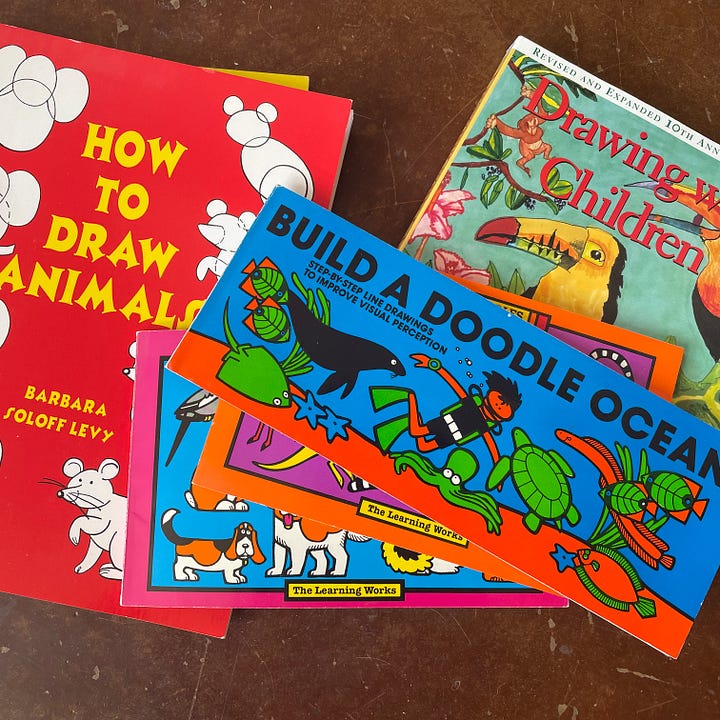
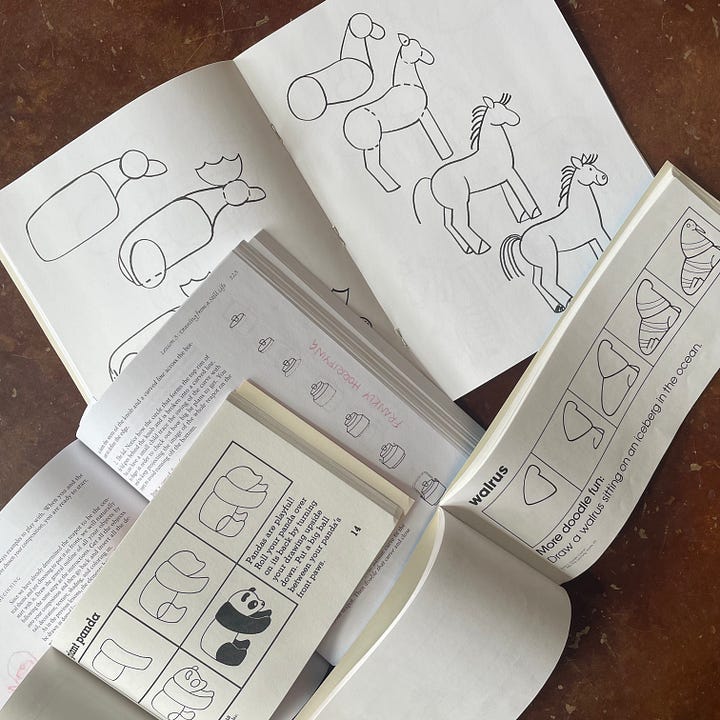
Notice that each step in these books asks you to essentially copy a particular line or set of lines. This is the distinctive feature of this type of drawing book.
They are different from Type 2 books in several ways:
They start with a part of the subject, instead of the whole, and build on it.
Every line is usually kept in the final drawing—unless they are dotted lines. (Dotted lines to erase are often a good indicator of this kind of book.)
They very rarely have any explanatory text. (Usually none is needed.)
This type of book is good for teaching:
How to notice the difference between two drawings (identifying the next step).
How to follow visual, step-by-step instructions.
Seeing and copying lines and shapes accurately.
Expanding a symbolic repertoire.
These are great books for young children (about 10 and under) and for older students at the very beginning of learning to draw.
Type 2: Books with Basic Shapes (or The Drawing Process)
This second type of drawing books is often more complex-looking or detailed—or can appear that way to those who are unfamiliar with drawing. This can be intimidating to some, but usually when you sit down and follow along the tutorials, you’ll find they are not as difficult as you first thought.
These books have many distinctive features that you will not find in Copy-This-Line books.
Early stages of the step-by-step instructions are very light (or sometimes in a designated color), because early lines are rarely kept in the final drawing.
The first step is either a single line or stick-figure like drawing, or a very simplified drawing of the whole subject using basic shapes (such as circles, squares, or triangles).
Each step generally adds more detail.
There is usually at least one page (typically at the beginning of the book) that demonstrates how to draw spheres, boxes/blocks, cylinders, and cones/prisms.
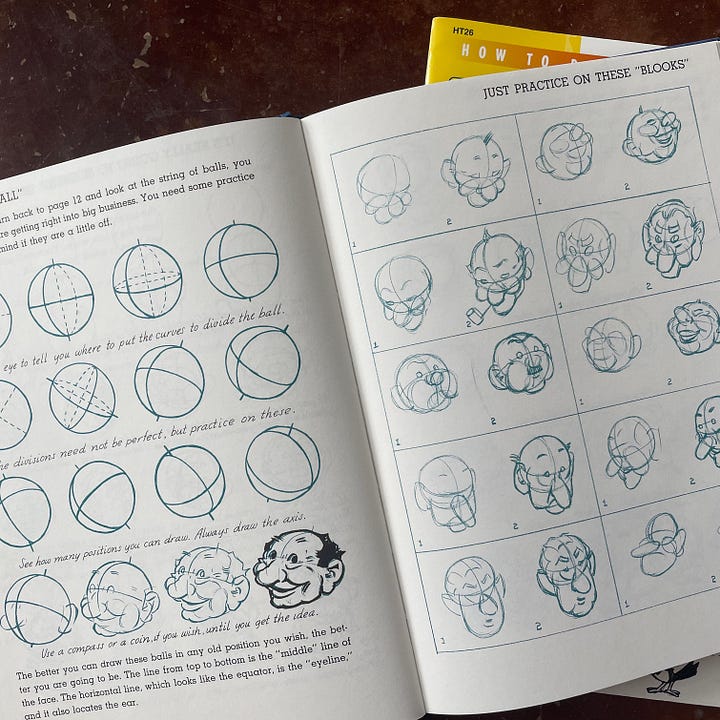
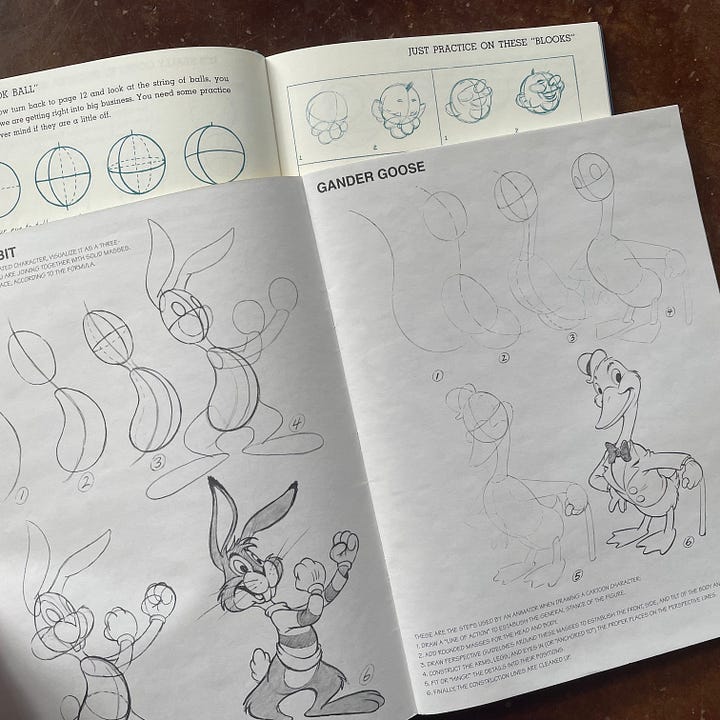

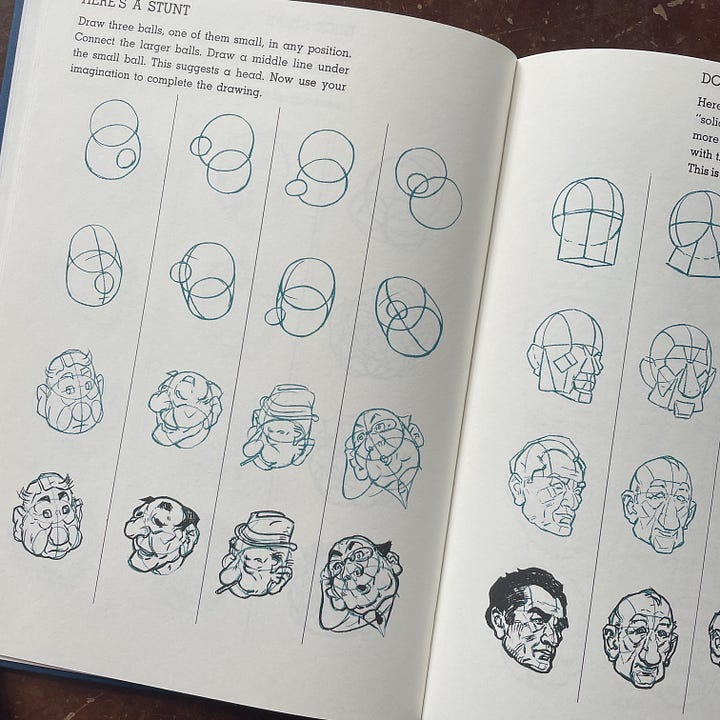
In addition, these books almost always include explanatory text. Though many books of this type are geared for an older audience, younger children can often follow along with these step-by-steps if they are read the instructions and given a little guidance.
This type of book is good for teaching:
How to recognize the basic shapes (circles, squares, and triangles).
Using the basic shapes to draw any subject.
How to plan a drawing.
The Drawing Process (draw lightly with basic shapes to capture the whole subject, and then add smaller shapes and more detail).
Drawing from life or photos (how to draw what you see).
The foundations of drawing from imagination.
PARENTAL GUIDANCE SUGGESTED: It is always advisable to carefully look through drawing books before giving them to young children. (Even if they’re marketed to children, it’s better to check.) Many books that include sections on drawing the human figure will contain nudes, which may need to be censored for youngsters (at their parent or guardian’s discretion).
However, other portions of the book may include wonderful instruction that is appropriate. You may be able to make photocopies of acceptable pages to give them, or allow them to use the book with supervision.
Which is Better?
Both types of drawing books have their uses, and it depends on the student’s starting ability level and degree of interest.
In general, I recommend books that teach using Basic Shapes and the Drawing Process.
Here’s why:
Patterns to Copy
Copy-This-Line drawing books teach students patterns to copy. They are often very symbolic, and they will not help a young artist learn how to draw realistically.
When you have finished a Copy-This-Line tutorial, the only thing you have learned is how to draw that subject, in that position, from that angle.
Motivated students can attempt to adapt these patterns to other subjects, such as using a horse pattern to draw a deer. However, more complex changes are very frustrating. For example, changing a “standing, side-view horse” pattern into a drawing of a “rearing horse from the front”—or even just “front view of a horse.”
Copy-This-Line books are in a pretty ancient tradition. This is very likely how the Egyptian scribes learned to draw, among many other early cultures. However, it’s also a big part of the reason why all their drawings look alike!
Methods to Apply
On the other hand, Basic Shapes books contain all the skills a student needs to learn how to draw realistically and from imagination. I think of this type of training as teaching methods to apply.
Patterns aren’t very useful for problem-solving in drawing because they only apply to a single, specific circumstance—but methods, such as using basic shapes to draw complex subjects, can be adapted to serve in a wide variety of circumstances.
When you have finished a step-by-step tutorial of this kind, you have learned more than just how to draw a particular subject: you have learned a method of drawing that applies to any subject.
Although many young artists and beginners find submitting themselves to these methods frustrating or tedious, in the long run, this drawing methodology will give students a significantly greater range of expression.
Learning to copy lines does not help a student to draw realistically.
Learning to follow a process unlocks a student’s ability to draw anything they can see or imagine, and create lifelike drawings.
In my art curriculum, I focus heavily on the Drawing Process and constantly return to the basic shapes. Even though this method may seem to take longer, I do believe most people will end up happier with their drawings, because so many are unsatisfied with their drawings until they have learned to draw realistically.
The Drawing Process is the fastest and most reliable way to draw lifelike subjects.
Still, Copy-This-Line tutorials are valuable in early drawing training. When using these, I am looking for my students to be able to copy the examples as accurately (exactly) as they can. This helps to develop strong hand-eye coordination and trains their eyes to see the way an artist sees—important early steps to learning how to draw.
If you already have a collection of drawing books, take a look at them. Can you identify which type they are?
Do a self-assessment, or ask a friend or family member to help: Can you copy patters with a fair degree of accuracy? (Does your copy look nearly identical to the example?) If you can, you’re definitely ready to move on to learning the Drawing Process to level up your skills.
—HAPPY DRAWING!
Thank you for participating in The Homeschool Art Course. Support my work with a like, comment, and share!



